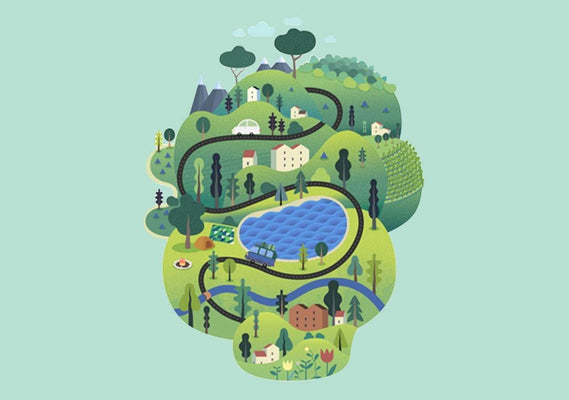The recent pandemic has shown us the great lengths people go to in the quest for toilet paper. Indeed, when it comes to the essential items, consumers tend to be shy on the detail and less likely to think about the impact their choices make on the planet. The reality is, flushing toilet paper is akin to flushing trees down the toilet.Thousands of trees are lost to the production of toilet paper every year.
There are forms of toilet paper that help with the reduction of deforestation and paper in landfills. The most common form of eco-friendly toilet paper is made with recycled paper, which also comes in recyclable packaging and is free of added chemicals. The added chemicals, used for whitening the toilet paper, are quite harmful to the environment. This is a big no-no.
Some forms of recycled toilet paper are mainly made up of post-consumer recycled paper, which has already been through the recycling process, maximizing the environmental benefits' effectiveness. Things like used textbooks and office paper are commonly used.
Additionally, there is bamboo toilet paper. Bamboo has become a reliable and eco-friendly alternative to many products that would usually be problematic to the environment. The usefulness of bamboo has, in recent years, extended to toilet paper.
Bamboo toilet paper is a relatively new form of toilet paper. With a soft but surprisingly durable composition, no added chemicals, and greatly biodegradable, this option is a perfect substitution for traditional toilet paper. Because bamboo is thefastest growing plant in the world, there is no concern for any resources to be wasted, unlike that of traditional forms of toilet paper.
Another benefit of bamboo toilet paper is how soft it is on the skin. Consumers who may have allergies or sensitive skin should consider buying bamboo toilet paper. Bamboo toilet paper is not only soft, but it is naturally hypoallergenic and antimicrobial. Furthermore, because FSC certified bamboo does not have any added chemicals, consumers do not have to worry about skin irritation, only about getting an essential task done.
Our daily use of toilet paper already adds so much waste to the environment. More eco friendly options should be considered as they help us take care of the environment. These options are not costly and perform the necessary functions that we all need. Make the switch!






















